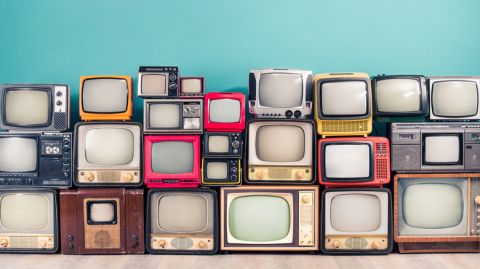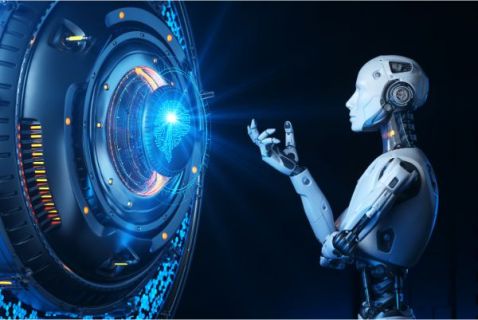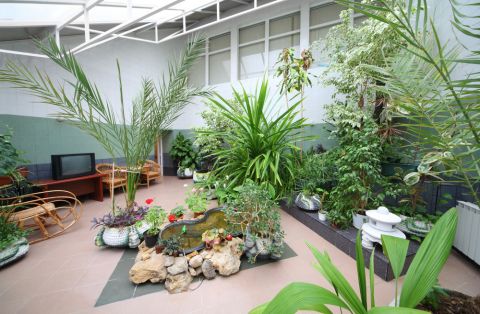The evolution of household devices
2025-04-22 13:33:36
In
the realm of modern living, the landscape of household devices has
undergone a profound evolution. From humble beginnings as simple tools
to the sophisticated smart solutions of today, these devices have not
only shaped our daily routines but have also transformed the way we
interact with our homes. Join us as we embark on a journey through time,
exploring the fascinating evolution of household devices and the
technological advancements that have propelled them forward.

The
Early Days: From Hearth to Hearthside Gadgets The story of household
devices begins centuries ago, where the hearth served as the focal point
of the home. In ancient times, basic tools like mortar and pestle,
grinding stones, and crude utensils were essential for food preparation
and cooking over an open flame. As societies progressed, so did the
complexity of household gadgets. The invention of the wheel, for
instance, revolutionized transportation and led to the creation of early
forms of mills and grindstones, enhancing efficiency in grinding grains
and food processing.
The
Industrial Revolution: From Handcrafted to Mass Production The dawn of
the Industrial Revolution marked a pivotal moment in the history of
household devices. With advancements in manufacturing techniques and the
advent of steam power, household gadgets transitioned from being
handcrafted to mass-produced commodities. This era saw the rise of
iconic inventions such as the sewing machine, the washing machine, and
the refrigerator, which revolutionized domestic life by reducing manual
labor and increasing convenience. These innovations not only transformed
the household economy but also liberated women from the constraints of
traditional domestic chores, empowering them to pursue other interests
and occupations.
The
Electrification Era: Powering Convenience The turn of the 20th century
witnessed another significant milestone in the evolution of household
devices: the electrification era. The widespread adoption of electricity
in homes paved the way for a new generation of gadgets powered by
electric motors. Vacuum cleaners, electric irons, and toasters became
staples in households, streamlining tasks and bringing newfound
convenience to everyday life. Moreover, the invention of the electric
refrigerator not only revolutionized food preservation but also
transformed dietary habits by enabling the storage of perishable goods
for longer periods.
The
Digital Age: Smart Solutions for Modern Living Fast forward to the
digital age, and we find ourselves immersed in a world of smart
solutions for modern living. The proliferation of microprocessors,
sensors, and wireless connectivity has ushered in a new era of household
devices that are smarter, more efficient, and interconnected. From
smart thermostats that optimize energy usage to robotic vacuum cleaners
that autonomously clean floors, technology has seamlessly integrated
into every aspect of home management. Furthermore, the advent of voice
assistants like Amazon Alexa and Google Assistant has enabled hands-free
control of devices, further enhancing convenience and accessibility.
The
Internet of Things (IoT): A Connected Home Ecosystem At the heart of
this technological revolution lies the Internet of Things (IoT), which
has transformed the concept of the connected home into a reality.
IoT-enabled devices communicate with each other through the internet,
allowing for seamless automation and remote control. Smart refrigerators
can track food inventory and suggest recipes based on available
ingredients, while smart security systems offer real-time monitoring and
alerts for enhanced safety. Moreover, the rise of smart home hubs and
platforms has enabled interoperability between different devices,
creating a cohesive ecosystem that enhances efficiency and user
experience.
Challenges
and Opportunities: Navigating the Future As we look ahead, the
evolution of household devices presents both challenges and
opportunities. On one hand, concerns about data privacy and security
continue to loom large, raising questions about the implications of
interconnected devices for personal privacy and cybersecurity. Moreover,
the rapid pace of technological advancement poses challenges in terms
of device compatibility and interoperability, as consumers grapple with
the complexities of managing a multitude of smart devices within their
homes.
On
the other hand, the future holds immense promise for innovation and
advancement in household technology. From the development of sustainable
and energy-efficient devices to the integration of artificial
intelligence for predictive maintenance and personalized user
experiences, there are countless opportunities to shape the future of
home automation and make our living spaces more intelligent, intuitive,
and environmentally friendly.
The
evolution of household devices is a testament to human ingenuity and
innovation, reflecting our relentless pursuit of convenience,
efficiency, and quality of life. From the humble tools of antiquity to
the interconnected smart solutions of today, these devices have
transformed the way we live, work, and interact with our homes. As we
stand on the cusp of a new era of technological advancement, the
possibilities for the future of household devices are boundless,
promising a world where our homes are not just spaces to inhabit but
intelligent ecosystems that anticipate our needs and enhance our lives
in ways we have yet to imagine.











